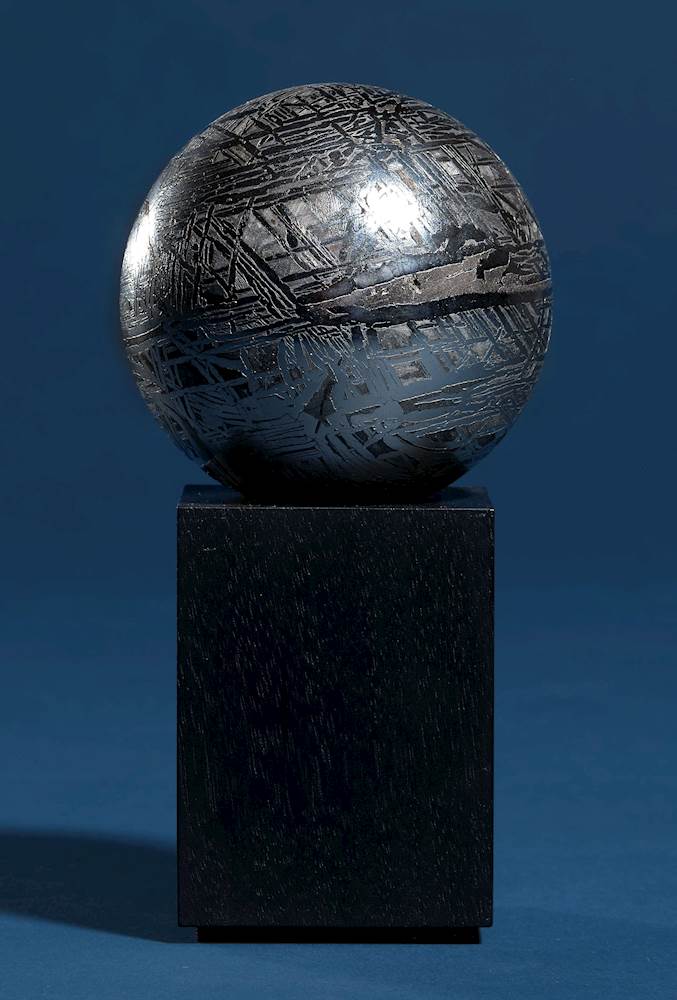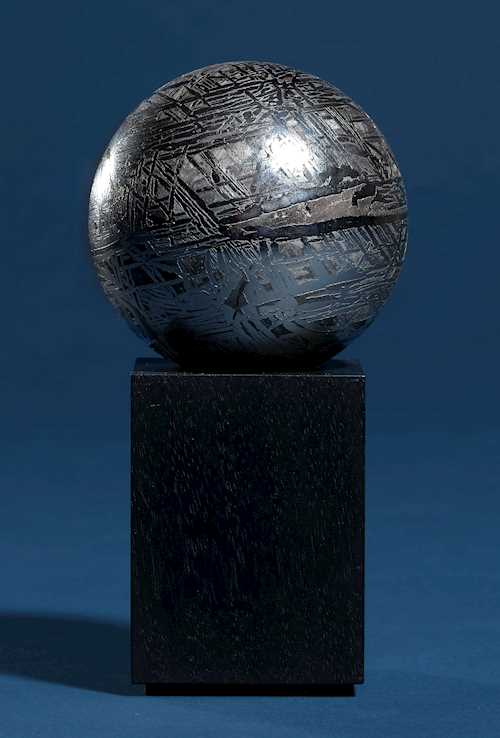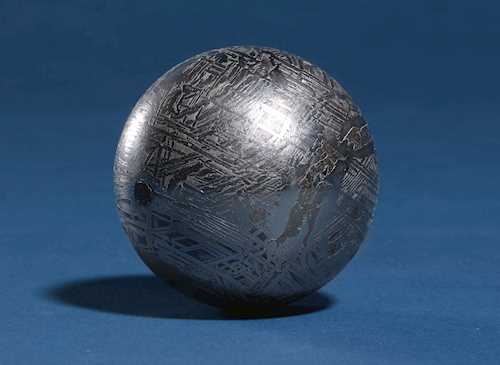
Lotto 4006* - A209 Out of This World - lunedì, 17. giugno 2024, 16h00
ALETAI METEORITE SPHERE
1898
Iron, IIIE
1056 g
D 6.3 cm
Another characteristic of the stone is its unusual surface structure. Iron meteorites are from the metallic core of asteroids. When it hits earth, the iron cools so slowly that it forms interweaving bands of two iron-nickel alloys, taenite and kamacite – the latter of which is unique to meteorite specimens and found nowhere else on earth. When prepared in a certain manner, the individual metal grains are revealed in a geometric structure called Widmanstätten lines.
The specimen presented here is a perfect metallic sphere, extracted from the core of the meteorite. It allows a perfect three-dimensional view of the meteorite’s interior crystalline matrix. If one slowly moves a light on it, the meteorite shimmers with a captivating, iridescent glow. This is due to the main component of the meteorite, the rare metal schreibersite.
Many scientists believe schreibersite was the primary source of phosphorus, delivered to Earth via meteorites billions of years ago, creating the necessary conditions for the very beginnings of life on Earth.
CHF 2 500 / 3 500 | (€ 2 580 / 3 610)
Venduto per CHF 6 250 (incl. premio dell'acquirente)
Non si assume alcuna responsabilità per la correttezza di queste informazioni.


